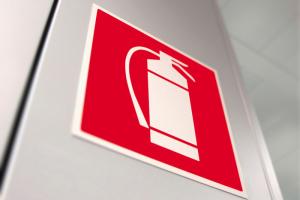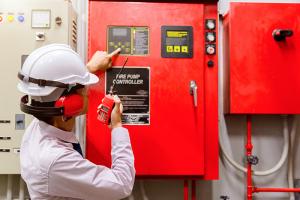Paving a path to sustainable energy

Providence St. Peter Hospital conducted a feasibility study on the electrification of its existing thermal load.
Image courtesy of Providence St. Peter Hospital
Hospitals can play a crucial role in pioneering sustainability and environmental stewardship in their communities. In the heart of Olympia, Wash., Providence St. Peter Hospital has shown how that leadership is possible. Partnering with the American Society for Health Care Engineering (ASHE) in a comprehensive case study, St. Peter Hospital demonstrated that decarbonizing an existing hospital is not only feasible but also essential for a sustainable future.
Hospitals create significant energy emissions due to their unique need to provide care for patients 24/7. Leaders can find extensive guidance on decarbonizing while designing and planning new hospital buildings, but far less support is available for existing buildings. ASHE recognized the need to focus on existing hospitals and found that St. Peter’s location, temperate climate and leadership in environmental sustainability offered an opportunity for a case study on the technical and financial feasibility of decarbonizing an existing building. The case study aimed to verify the feasibility of achieving carbon neutrality for Scope 1 direct emissions and Scope 2 indirect emissions at St. Peter Hospital.
Identifying the missing piece
Supporting sustainability has been a key part in St. Peter’s environmental stewardship strategy. As it developed its climate action plan, the hospital recognized a crucial factor in decarbonizing — the electrification of the buildings’ thermal energy loads. Historically, hospitals have relied on fossil fuels for heating, which contributes significantly to their carbon footprint. The ASHE study focused on investigating the feasibility of electrifying St. Peter’s heating system, a move that would drastically reduce its carbon emissions.
The case study revealed that it is possible for St. Peter to decarbonize its thermal load; however, due to the hospital’s need to provide continuous patient care, progress will come slowly. Achieving carbon neutrality for the thermal load will take ten to 15 years while mitigating the impact on the local power grid. This extended timeline underscores the importance of careful planning and early preparation as health care systems seek to decarbonize.
Future directions and lessons learned
So, what comes next? The study helped St. Peter identify the critical phases of electric heat implementation that are dependent on available resources, including the need to upgrade and replace pieces of a facility’s heating system over time. Although not universal to all hospitals and climates around the nation, St. Peter’s method shows that decarbonization for existing facilities is possible with thoughtful conversations, planning and collaboration. The hospital’s journey also offers valuable lessons.
First, it highlights the importance of early preparation and careful planning. Decarbonizing an existing hospital is a complex process that requires a clear roadmap and commitment from all stakeholders — and the process will look different for every hospital.
Second, St. Peter’s success in utilizing sustainable energy demonstrates the potential for other facilities to follow suit. By investing in renewable energy sources, hospitals can significantly reduce their carbon footprint and contribute to a sustainable future while continuing to provide needed care for patients.
Finally, the study amplifies the need for ongoing research and collaboration in health care on environmental sustainability. As the sector continues to evolve, it is essential to share knowledge and experiences to drive progress and innovation.
Explore the full ASHE case study, and learn more about what environmental sustainability looks like in health care.
Kara Brooks, MS, LEED AP BD+C, is the senior associate director of sustainability at the American Hospital Association.




